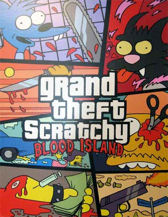There is some commotion between EA and Rockstar over the new Simpsons game, which was originally slated to include a level called Grand Theft Scratchy.

Apparently, Rockstar pressured EA to remove Grand Theft Scratchy from the game, because, you know, “we need to protect our IP” or some such. Nobody really knows, except that Rockstar apparently feels that parody is not something you should have in games.
Parody was supposed to be protected from this type of legal problems, apparently not.
It would be redundant to describe Rockstar as hypocritical here, but certainly someone took a wrong turn somewhere.
Gamasutra has a link collection on the story here, and Gamepolitics has some developer interviews.


